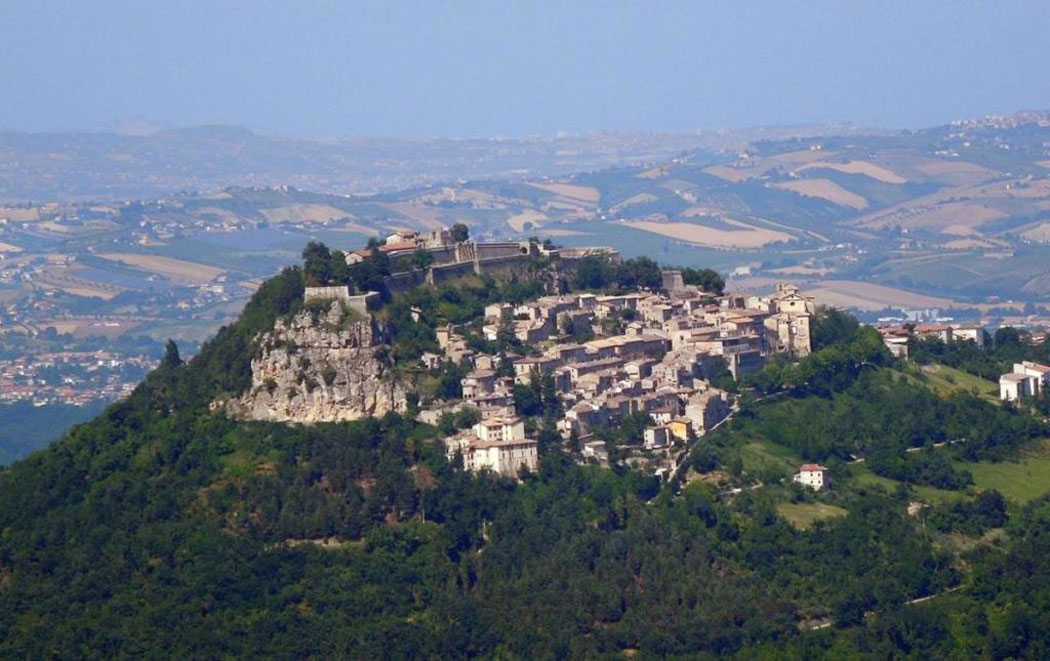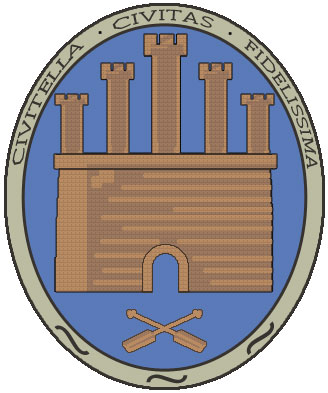

It is perched on a hilltop at almost six hundred meters and its profile is dominated by the majestic Bourbon Fortress and its historic centre, so well preserved as to be included among the most beautiful villages in Italy. From its wonderful Belvedere you can enjoy a grand panorama that ranges from the Adriatic Sea to the Gran Sasso and Monti della Laga.
Its origins are very ancient and these territories were inhabited by the Piceni before entering the orbit of the Romans, and Neolithic remains were found in the caves of Sant 'Angelo and Solomon.
The current Civitella originated in the 9th century during the period of the fortresses when, to escape the barbarian Hungarian and Saracen raids, the populations were looking for better defensible places, such as the rocky outcrop on which "Tibidella" was built.
With the arrival of the barbarians, therefore, the population took refuge in a fortress on a hill and the first certain historical testimony of Civitella dates back to the year 1001 when it is mentioned as Tibitella in a notarial deed.
Civitella del Tronto, always a borderland, thanks to its enviable panoramic position, has had over the centuries a great strategic importance and was immediately targeted by various peoples, who wanted to capture it.
Between the twelfth and thirteenth centuries the town belonged to the Kingdom of Naples and the Angevins. Given its particular geographical position on the border with the Papal State, Charles I of Anjou, king of Naples, ordered its fortification with surrounding walls.
Thus the Fortress of Civitella del Tronto was completed on 25 March 1269. It was one of the largest and most important military engineering works in Europe characterized by an elliptical shape with an area of 25,000 square meters and a length of over 500 meters.
Subsequently, the town passed from the Angevins to the Aragonese of Spain, and in 1450 Alfonso of Aragon transformed the castle into a stronghold, a particularly robust military fortress, in view of the twenty-year war with France.
Its position, which follows the elongated profile of the hill and its mighty walls that rise above the town, have made it a crucial point in the defense system and today an iconic place.
In 1557 it was besieged by the French Duke of Guise, general of Henry II and ally of Pope Paul IV. Despite being known for his ferocity and his violence, the Duke was unable to conquer the city and, in May of the same year, he removed the siege and retired to Ancona.
Just during this war, between the French and Spanish, Civitella changed its name to Civitella del Tronto, as the key force in the Tronto War. The victorious and valiant resistance of the people of the citadel was recognized by the Kingdom, so much so that its citizens were released from tax burdens for forty years, and at the expense of the state property the buildings and the Fortress were restored.
For the same episode in 1589 it was elevated to the rank of city and was given the title of Fidelissima by Philip II of Spain.
But its fate was not have much peace and it was besieged again by Napoleon's French troops in 1798 and 1806. The Fortress was defended by the Irish major Matteo Wade who was able to sustain a four-month siege against the much more numerous Napoleonic troops , capitulating honorably on May 22, 1806.
In 1816 following the Congress of Vienna the city became part of the Kingdom of the Two Sicilies.
A famous page of history links Civitella del Tronto and its Fortress to that of the Risorgimento.
In 1860, after passing through Emilia-Romagna and the Marche, the army of Vittorio Emanuele II of Savoy on October 26th besieged Civitella. Bourbon soldiers managed to resist for two hundred days.
So, despite the Kingdom of the Two Sicilies ending on February 13, 1861 with the fall of Gaeta, and the surrender had been sealed on March 17 with the proclamation of the Kingdom of Italy in Turin, Civitella continued to fight, falling only on March 20 1861, three days after the unification of Italy was sanctioned.
This episode made it the last Bourbon stronghold that surrendered, effectively accepting the end of the Kingdom of the Two Sicilies.
In the years immediately following the Unification, several brigands operated in the territory of Civitella, some of whom were simple bandits, others though were partisans of the ceased Bourbon kingdom. Unfortunately, in those years the Fortress, no longer strategically important, was abandoned and sacked by the citizens themselves, thus creating the ruin of one of the major military architectural works of the Abruzzi.
Today, thanks to important restoration activities, the Fortress can be completely visited with a walk that includes three covered walkways, the vast parade grounds, the cisterns, the long patrol walkways, the remains of the Governor's Palace, the Church of San Giacomo and the soldiers' barracks. Inside there is also the Museum of Arms which is spread over four rooms where weapons and ancient maps are kept, the latter connected to the historical events of Civitella del Tronto.
The streets of the historic centre that allow you to climb towards the Fortress, are often very narrow and steep, because originally they were designed to channel the assailants into narrow spaces or to surprise them from behind.
The narrowest street of Civitella del Tronto is the famous Ruetta which allows passage for one person at a time. A plaque at the entrance of the narrow lane declares: "La Ruetta, Italy's narrowest street". In reality the primacy is disputed with an alley of Ripatransone, which at this moment holds the Italian record, even if the survey is the subject of many disputes.
Civitella del Tronto and all the surrounding area are famous for the Pretuziano oil of Colline Teramane, unique and one of a kind, which takes its name from the Pretuzi, the Italic people who lived in the territory coinciding with the current province of Teramo and an oil which today flavours all local cuisine.








Follow us